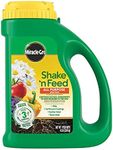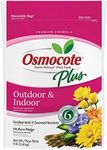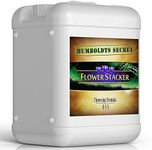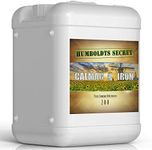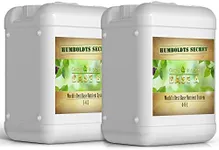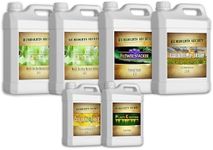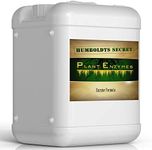Buying Guide for the Best Garden Fertilizers
Choosing the right garden fertilizer is crucial for the health and growth of your plants. Fertilizers provide essential nutrients that plants need to thrive, and selecting the right one can make a significant difference in your garden's productivity. When picking a fertilizer, consider the type of plants you are growing, the condition of your soil, and your gardening goals. Understanding the key specifications of fertilizers will help you make an informed decision that best suits your garden's needs.N-P-K RatioThe N-P-K ratio represents the percentage of nitrogen (N), phosphorus (P), and potassium (K) in the fertilizer. These are the primary nutrients that plants need. Nitrogen promotes leafy growth, phosphorus supports root development and flowering, and potassium enhances overall plant health and disease resistance. For leafy vegetables, a higher nitrogen content is beneficial, while flowering plants and root crops may require more phosphorus and potassium. Choose a balanced ratio for general garden use or a specific ratio tailored to the needs of your plants.
Type of FertilizerFertilizers come in various forms, including granular, liquid, and slow-release. Granular fertilizers are easy to apply and provide nutrients over time, making them suitable for long-term feeding. Liquid fertilizers are quickly absorbed by plants and are ideal for a rapid nutrient boost. Slow-release fertilizers gradually release nutrients over an extended period, reducing the need for frequent applications. Consider the convenience and specific needs of your plants when choosing the type of fertilizer.
Organic vs. SyntheticOrganic fertilizers are made from natural materials such as compost, manure, and bone meal. They improve soil structure and promote beneficial microbial activity. Synthetic fertilizers are chemically manufactured and provide precise nutrient ratios. Organic fertilizers are ideal for gardeners looking to enhance soil health and sustainability, while synthetic fertilizers offer quick and targeted nutrient delivery. Decide based on your gardening philosophy and the immediate needs of your plants.
MicronutrientsIn addition to the primary nutrients (N-P-K), plants also require micronutrients like iron, manganese, zinc, and copper in smaller amounts. These micronutrients are essential for various physiological functions and overall plant health. Some fertilizers include micronutrients, while others do not. If your soil is deficient in specific micronutrients, choose a fertilizer that provides a comprehensive nutrient profile to ensure your plants receive all the necessary elements for optimal growth.
Soil pH CompatibilityThe pH level of your soil affects nutrient availability to plants. Some fertilizers are formulated to work best within specific pH ranges. Conduct a soil test to determine your soil's pH and choose a fertilizer that matches or helps adjust the pH to the optimal range for your plants. This ensures that the nutrients in the fertilizer are effectively absorbed by the plants.
Application MethodDifferent fertilizers require different application methods, such as broadcasting, side-dressing, or foliar feeding. Broadcasting involves spreading the fertilizer evenly over the soil surface, while side-dressing places it near the plant roots. Foliar feeding involves spraying a liquid fertilizer directly onto the plant leaves. Choose an application method that suits your gardening practices and the specific needs of your plants for efficient nutrient uptake.
